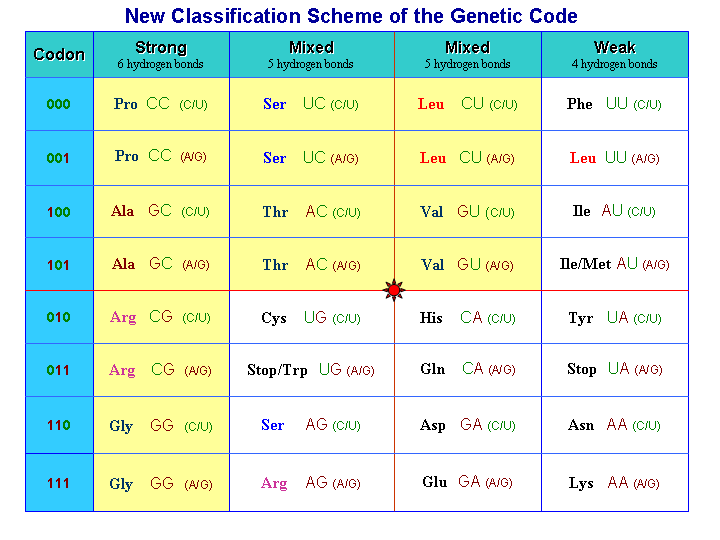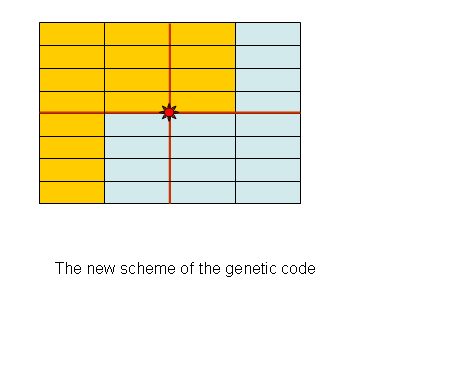
Codon Symmetries of the Genetic Code
The new classification scheme of the genetic code shows all 5 codon symmetries in a simple two dimensional table (in contrast to the proposed complicated 3D illustrations):

Fig.1 The new classification scheme and codon symmetries of the genetic code
 |
Halitsky Point Symmetry The star in the centre indicates the Halitsky family (4, 6 -fold codons) - non- family (2, 1- fold codons) symmetry. Halitsky (2003) found that by exchanging the two amino bases A and C and the two keto bases G and U one gets a mapping of family codons to non-family codons. For example, family codons GG(A/G) of Gly in the bottom left corner are symmetrical to the non-family codons UU(C/U) of Phe in the right upper corner of the table. Codon - Anticodon Symmetry The red horizontal line indicates codon anticodon symmetry axis (G ↔C and A↔U). For example, GGG is symmetrical to CCC, following codon anticodon symmetry (cf. Fig. 1). Purine-Pyrimidine Symmetry The red vertical line stands for purine-pyrimidine codon symmetry (G↔A, U↔C). For example, GGG is symmetrical to AAA. Codon - Reverse Codon Symmetry A reverse codon of any codon XYZ is defined as ZYX, where X,Y,Z can be any base. The red arrows in Fig. 1 indicate pairs of codon - reverse codons. For instance, CCU is reverse to UCC. In the rows 000, 101, 010 and 111 codons are self-reverse. Sense - Antisense Codon Symmetry A antisense codon of any sense codon XYZ is defined as Z'Y'X', where X,Y,Z are any bases and X', Y', Z' are their complementary bases, following Watson-Crick rules. For instance, CGU is the antisense codon of ACG(cf. blue arrows in Fig.1). |